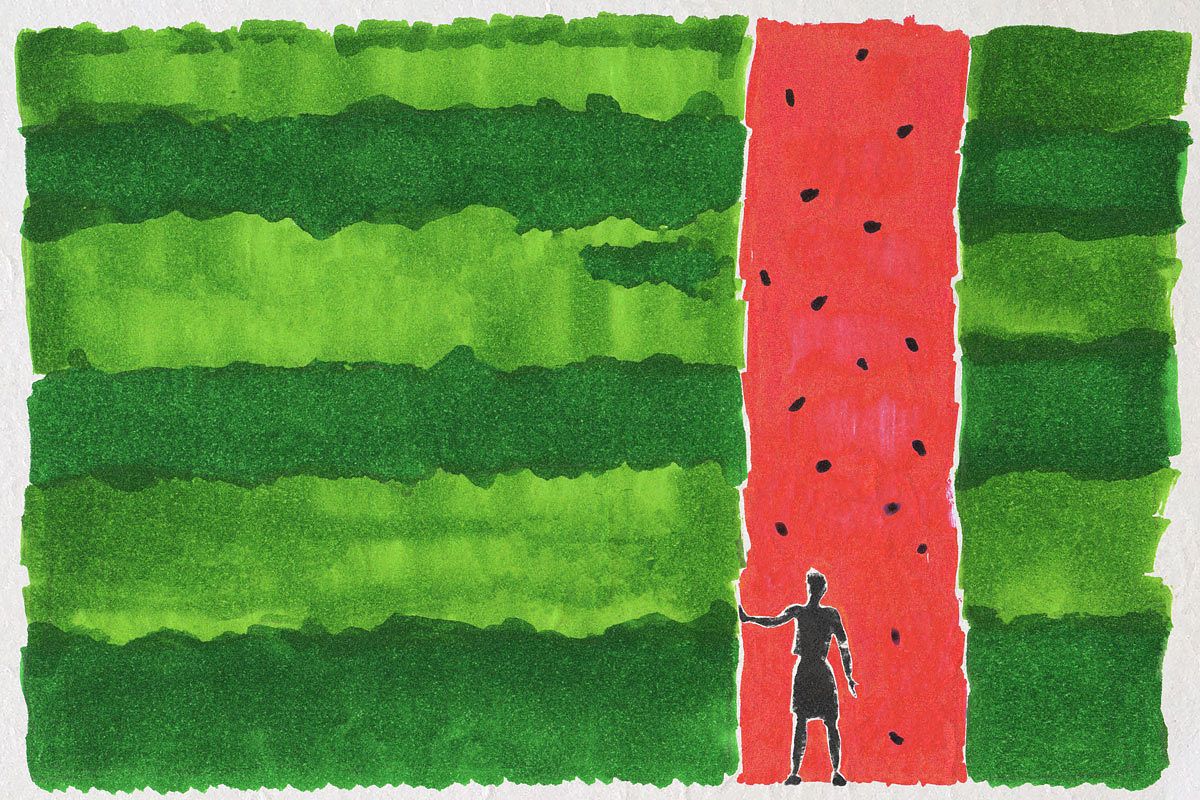Growing up in Vietnam, it seems that everything – from common household objects to fruits – has an origin story. Some of these local folk tales have a decidedly romantic angle, but others – like the legend of the pineapple – serve as a cautionary tale for children who misbehave.
Perhaps one of the most widely recognized folk tales is the legend of betel leaves and areca nuts, which depicts a love story that transcends the boundaries between life and death. The story behind the durian, too, is a romantic tale set in southern Vietnam and Cambodia. In the previous chapter of our Food History series, Saigoneer shed light on the origin story of the watermelon as proof of ancient Vietnam’s entrepreneurial spirit.
The pineapple, on the other hand, has become so omnipresent in the Southeast Asian country that many may not realize it’s actually not a native Vietnamese species. Horticultural history suggests that the prickly plant is endemic to South America, specifically the vicinity of southern Brazil and Paraguay. Native South Americans then started cultivating pineapple all over the continent, reaching as far as the Caribbean, Central America and Mexico, where the Aztecs and Mayans resided.
Christopher Columbus was credited with the introduction of the plant to Europe after encountering it on the island of Guadeloupe. Spanish ships brought pineapples to the Philippines when it was still a colony of the European country.
There’s no record of how Vietnam started cultivating the fruit, but the folklore surrounding the pineapple in both Vietnam and the Philippines bears a striking resemblance.
In Vietnam, the legend of the pineapple depicts the relationship between 15-year-old Huyen Nuong and her mother. In the Philippines, the female protagonist is named Piña.
The story goes as such: Once upon a time in Vietnam, there was a girl named Huyen Nuong who lived with her mother. Nuong’s father passed away when she was a child, thus her mother had to work constantly to support the family. Despite the household’s dire financial situation, Nuong was a lazy, inconsiderate and headstrong teenager who preferred to spend her days frolicking with friends than helping her mother.
One day, her mother was afflicted with a serious illness and spent several days recovering. Huyen Nuong had no choice but to take over the bulk of the housework and cooking. Having avoided chores all her life, Nuong struggled to figure out how anything worked and was constantly pestering her bedridden mom with questions about where all the household tools were.
Exasperated, her mother yelled: “I wish you had a thousand eyes to see where the tools are so that you’d stop asking me these stupid questions!”
More often than not, Nuong would retaliate with her typical smart-ass retorts, but this time her mother's complaint was met with silence. “She must have sneaked out with friends to avoid doing chores,” Nuong’s mother thought. The exhausted woman eventually had to shoulder the housework herself, as her daughter was nowhere to be found.
However, Nuong’s absence started to worry the mother, as she remained missing a few days later. When the mother went outside to look for Nuong, she was aghast to discover a strange fruit growing in her garden. The bush was short and filled with piney, waxy leaves. In the middle stood a yellowish fruit whose exterior was covered with tiny “eyes”. Nuong’s shoes lay next to the mysterious tree.
The versions of this tale from both Vietnam and the Philippines feature the same details, save for the protagonist’s name. Some used to refer to pineapples in Vietnam as trái huyền nương instead of the modern words thơm, khóm, or dứa.
The story doesn't elaborate upon how the transformation happened, but one could assume that the mother’s shade was so savage that Nuong died and became a pineapple. The story has since gone on to become one of the most popular weapons for local moms to wield when forcing their children to help with household chores. Don’t want to become a pineapple? You’d better pick up that broom and start sweeping.















